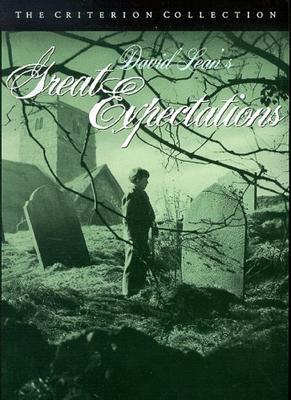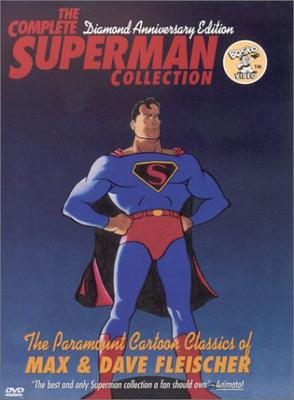Been in a bit of a ’40s mode lately.
 First, in keeping with my recent efforts to catch up on films that were directed by David Lean or that starred John Mills and/or Alec Guinness, I finally got around to checking out the Criterion editions of Great Expectations (1946) and Oliver Twist (1948). These were the first films Lean made after his four-film collaboration with Noel Coward, and I can’t help but think that Lean was playing it safe by turning to a storytelling stalwart like Dickens for his first films as a more “independent” director.
First, in keeping with my recent efforts to catch up on films that were directed by David Lean or that starred John Mills and/or Alec Guinness, I finally got around to checking out the Criterion editions of Great Expectations (1946) and Oliver Twist (1948). These were the first films Lean made after his four-film collaboration with Noel Coward, and I can’t help but think that Lean was playing it safe by turning to a storytelling stalwart like Dickens for his first films as a more “independent” director.
At any rate, these stories have become so familiar to me through other directors’ interpretations that I didn’t pick up on a whole lot that was distinctively Lean-ish about these versions, especially Great Expectations (though the “talking cows” were kinda goofy, almost something I would have expected more from the Powell & Pressburger films of that era than of any Lean film).
 However, I was very impressed with Lean’s noir-ish, gothic use of light and shadow in Oliver Twist — the wind blowing through the nature shots was reminiscent of the adultery scene in Ryan’s Daughter (1970), though it is quite foreboding here whereas it is more romantic there — and I was also impressed that we get nearly seven minutes into the film before we hear significant dialogue, if any. Great Expectations is narrated in voice-over by Pip (played by Mills), but Oliver Twist relies more confidently on our ability to read the occasional words on the screen and, more importantly, on our ability to interpret sounds and images.
However, I was very impressed with Lean’s noir-ish, gothic use of light and shadow in Oliver Twist — the wind blowing through the nature shots was reminiscent of the adultery scene in Ryan’s Daughter (1970), though it is quite foreboding here whereas it is more romantic there — and I was also impressed that we get nearly seven minutes into the film before we hear significant dialogue, if any. Great Expectations is narrated in voice-over by Pip (played by Mills), but Oliver Twist relies more confidently on our ability to read the occasional words on the screen and, more importantly, on our ability to interpret sounds and images.
Also interesting to see young actors who went on to become much bigger. Great Expectations “introduces” Jean Simmons as the young Estella, one year before her small role in Powell & Pressburger’s Black Narcissus (1947), and a few more years before she started co-starring in ancient epics like The Robe (1953) and Spartacus (1960); she recently provided one of the voices for the main character in Howl’s Moving Castle, too! And speaking of ancient epics, Magwitch in Great Expectations is played by Finlay Currie, who went on to play Peter in Quo Vadis (1951), Balthasar in Ben Hur (1959), and David in Solomon and Sheba (1959).
 And then, of course, there is Guinness, who has a small-ish role as Pip’s roommate in Great Expectations, and then goes on to his much bigger, and rather controversial, role as Fagin in Oliver Twist. His make-up — designed by Stuart Freeborn, who went on to create Yoda and Jabba the Hutt! — is so theatrical and exaggerated, in a way the make-up on the other characters never is, that I can understand why some people have accused the film of anti-Semitism, but honestly, the character doesn’t seem all that different from the character I have seen in any of the other adaptations of this story; the true villain, in my books, remains the rather non-Jewish Bill Sykes.
And then, of course, there is Guinness, who has a small-ish role as Pip’s roommate in Great Expectations, and then goes on to his much bigger, and rather controversial, role as Fagin in Oliver Twist. His make-up — designed by Stuart Freeborn, who went on to create Yoda and Jabba the Hutt! — is so theatrical and exaggerated, in a way the make-up on the other characters never is, that I can understand why some people have accused the film of anti-Semitism, but honestly, the character doesn’t seem all that different from the character I have seen in any of the other adaptations of this story; the true villain, in my books, remains the rather non-Jewish Bill Sykes.
 And then, switching genres completely, I took in the entire collection of Superman cartoons — half of which were directed by Max & Dave Fleischer — that were produced for Paramount between 1941 and 1943.
And then, switching genres completely, I took in the entire collection of Superman cartoons — half of which were directed by Max & Dave Fleischer — that were produced for Paramount between 1941 and 1943.
The character was created only a few years before, in 1938, so it is interesting to see how much of his mythos was still in flux. For one thing, it was apparently these cartoons that created the whole “faster than a speeding locomotive” spiel. Also, it is not entirely clear whether Superman ever actually flies, or whether he is simply making great leaps; it seems to vary from cartoon to cartoon, and in ‘Showdown’, he actually climbs up a vertical tunnel. What’s more, the first cartoon (nominated for an Oscar, which ultimately went to Disney‘s ‘Lend a Paw’) tells us that the infant from Krypton was found by a passing motorist and raised in an orphanage — no Smallville or Kent family here! — and the narrator goes on to tell us that Superman fights for “truth and justice”; there is no mention here of “the American way”.
Which is not to say that Superman doesn’t fight for the Americans; there was a World War raging at the time, after all. ‘Japoteurs’ and ‘Eleventh Hour’ show Superman battling the Japanese (in the latter film, he blows up one munitions plant or military base after aonther, and you kind of wonder if he took any care to make sure no one got hurt as he did so), while ‘Jungle Drums’ and ‘Secret Agent’ show him battling the Nazis (who, in the former film, have teamed up with some stereotypical African cannibal types).
Interestingly, all four of the war-themed cartoons belong to the second half of the series, after the Fleischers had stopped working on it, and there is a noticeable drop in quality in the cartoons as a whole. The earlier cartoons are full of great moments, and they are especially adept at what those in the biz call “effects animation” — the shading that gives depth and dimension to the characters and settings, volcanic lava, molten metal, falling meteors, stuff like that. And this was only a year or two after Disney had set new standards for realism with regard to this stuff in Fantasia (1940)!
There are lots of little details that I like, like the way Superman looks both ways before he leaves the stock room in ‘Superman’, to make sure that no one has spotted him, or the way we see a close-up of his eyes changing lenses as he makes use of his X-ray vision in ‘The Mechanical Monsters’, or the way we see a close-up on his chest as the bullets briefly dimple it in ‘Billion Dollar Limited’, or the goofy giant magnet that lures a comet towards the Earth in ‘The Magnetic Telescope’. ‘The Arctic Giant’ also features a dinosaur going on a rampage through Metropolis, some 12 years before the first Godzilla movie. And my favorite detail from the non-Fleischer cartoons would probably be the moment in ‘Japoteurs’ when someone presses his cigarette into a newspaper photo, and the paper burns away to reveal the next scene.
Apart from a poorly designed menu screen, the one thing that irks me about this set is that Bosko Video, which mastered these images back in 1991, has printed a subtitle onto the beginning of each cartoon telling us when it was first released. That’s nice, guys, but save it for the back cover — I’d like my restored films to be as pristine and close to their original form as possible!












